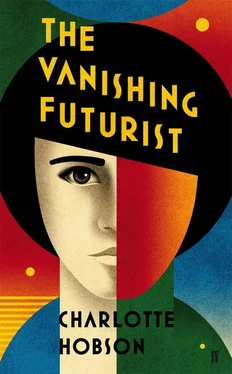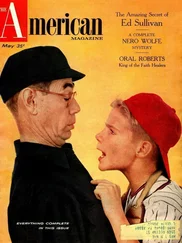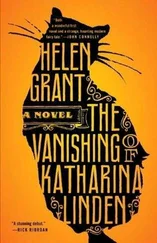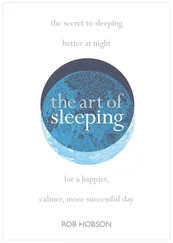Communal living was one of the simplest yet most radical of these transformative methods. Under War Communism thousands of small cooperative rural communes (as distinct from traditional peasant communes) sprang up all over Soviet Russia; by 1921 there were 865 house-communes in Moscow ( dom-kommuny in Russian – not to be confused with the archetypal kommunalka , communal flat, created when apartments were resettled by peasant and worker families, and famous for its squalor and ill-will).
Both rural and urban communes varied hugely, of course; some had little ideological content and were simply a way of stretching scant supplies, while others were a conscious effort to mould the ‘new personality’ and to influence wider society. Some were women-only; some were made up of groups of veterans, or employees of one factory, or university friends. Several accounts exist of communes in the twenties, to which the Institute of Revolutionary Transformation owes quite a debt: to the Muscovite librarians who collectivised their underwear, for example, and the Automotive Works of Moscow Commune who appointed a string ensemble to entertain the other communards while they were doing the ironing.
As one might expect, sex, disagreements over money and petty domestic disputes emerge as the major challenges to harmony. Each commune had a different approach to the divisive issue of sex; some aimed for celibacy, while others allowed members to bring partners with them. A Moscow youth commune is reported as outlawing sex for two years until its members rebelled. The League of Time fiends seem to have been the most fundamentalist of all; they apparently disapproved of any close relationships between individuals, even platonic, and insisted on the commune spending all their leisure time together.
Discussions and ‘confessions’ of negative feelings were a fairly universal approach to solving disputes, while a charismatic leader was one of the factors that could bind a group together. There was a high turnover in most urban communes, particularly as many members objected to the communal raising of children. The collective life was in any case often seen as a temporary state for students or young workers, rather than a lifelong model. In the twenties a number of ‘rational’ communal apartment blocks were built, with shared living spaces and services, children’s areas and so on. Some of these allowed a little privacy for couples and families; others provided conjoining rooms that could be locked in the case of divorce. The state also subsidised rural communes, even producing some pro-commune propaganda – a leaflet entitled ‘Come On, Live Communally!’
By the end of the twenties, however, the tide had turned against the avant-garde and all their experiments, including communal living. The two revolutions, which had run on parallel rails for a decade, now parted ways. State support was withdrawn and pressure was applied to individuals and institutions to end their search for new ways of living. Artists and writers were urged to adopt the simpler, drearier imagery and concerns of Socialist Realism, including, of course, the deification of the leader.
A century after the event, however, the extraordinary creativity and open-minded questioning of the avant-garde still amazes and inspires audiences across the world. ‘The period of the Revolution and the twenties,’ writes Richard Stites, ‘was one of those rare moments when a large number of people actually tried to break the mould of social thinking that sets limits to mankind’s aspirations, that defines “human nature” in a certain unchangeable way, that speaks in realistic, prudent, and ultimately pessimistic tones to the enthusiasts of this world in order to curb their energies and their fancies.’ One of the irresistible aspects of early Soviet Art is its unusual optimism about humanity. The avant-garde’s transformative art may have fallen short of its intentions, but like medieval alchemy it inspired new investigations and ultimately new understanding. Its creations – naïve to some, original and intuitive to others – have become an integral part of the fabric of Western culture. Dreamers then, but essential dreamers.
Bibliography
Baer, Nancy Van Norman, Theatre in Revolution: Russian Avant-Garde Stage Design 1913–35 (New York/London: Thames and Hudson, 1991)
Billington, James H., The Icon and the Axe: An Interpretative History of Russian Culture (New York: Vintage, 1970) (for the expression ‘the alchemy of art’)
Gray, Camilla, The Russian Experiment in Art 1863–1922 (London: Thames and Hudson, 1962)
Stites, Richard, Revolutionary Dreams: Utopian Vision and Experimental Life in the Russian Revolution (Oxford: OUP, 1989)
Charlotte Hobson’s first book, Black Earth City , won a Somerset Maugham Award and was shortlisted for the Duff Cooper Prize and the Thomas Cook Travel Book Award. She lives in Cornwall with her husband, the writer Philip Marsden, and their two children.

First published in 2016
by Faber & Faber Ltd
Bloomsbury House
74-77 Great Russell Street
London WC1B 3DA
This ebook edition first published in 2016
All rights reserved
© Charlotte Hobson, 2016
Cover design: La Boca
The right of Charlotte Hobson to be identified as author of this work has been asserted in accordance with Section 77 of the Copyright, Designs and Patents Act 1988
Excerpt from Trotsky’s Sochineniia , XXI: 110–12, from A People’s Tragedy: The Russian Revolution 1891–1924 , published by Jonathan Cape. Reproduced by permission of the Random House Group Ltd.
‘Incantation by Laughter’, Velemir Khlebnikov, translated by Gary Kern, from The Chatto Book of Nonsense Poetry , edited by Hugh Haughton and published by Chatto & Windus. Reproduced by permission of the Random House Group Ltd.
Excerpt from ‘Trumpet of the Martians’, Velemir Khlebnikov, in Russian Futurism through Its Manifestos , translated by Anna Lawton and Herbert Eagle, Cornell University Press, 1988
Excerpt from ‘The Twelve’, Aleksandr Blok, translated by Jon Stallworthy and Peter France in Selected Poems , Carcanet, 2000. Reprinted with permission.
Every effort has been made to trace or contact all copyright holders. The publishers would be pleased to rectify any omissions or errors brought to their notice at the earliest opportunity.
This ebook is copyright material and must not be copied, reproduced, transferred, distributed, leased, licensed or publicly performed or used in any way except as specifically permitted in writing by the publishers, as allowed under the terms and conditions under which it was purchased or as strictly permitted by applicable copyright law. Any unauthorised distribution or use of this text may be a direct infringement of the author’s and publisher’s rights, and those responsible may be liable in law accordingly
ISBN 978–0–571–32740–9






![Майкл Муркок - Спящая волшебница / The Sleeping Sorceress [= Участь Белого Волка, Рыцарь Хаоса, The Vanishing Tower]](/books/327544/majkl-murkok-spyachaya-volshebnica-the-sleeping-sorc-thumb.webp)






